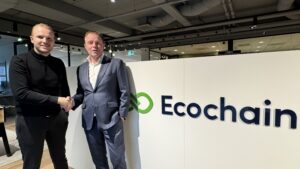In a world where sustainability is no longer optional but essential, suppliers are increasingly being called upon to understand, calculate, and act on their product carbon footprints (PCFs). But what’s in it for you? Why should you, as a supplier, invest time and resources into product footprinting?
These questions were at the heart of a recent webinar hosted by Ecochain, featuring sustainability expert Dr. Pratik, Unilever’s Tiago Freitas (PMO of the Supplier Climate Program), and Ecochain’s Kimberly as moderator. Together, they unpacked how suppliers—from small businesses to global manufacturers—can not only comply with emerging requirements, but turn carbon transparency into a competitive edge.
Here are the most important lessons from the session—and why you should start your PCF journey today.
Why Product Footprints Are Becoming Business-Critical
Unilever has committed to achieving net-zero by 2039, with major interim targets for 2030. But as Tiago Freitas made clear, over 60% of their emissions come from raw materials and ingredients—i.e., from their suppliers.
To reach these ambitious goals, collaboration is key.
“This is no longer just a reporting requirement. It’s a strategic priority,” said Freitas. “We can’t achieve our goals without our suppliers stepping up.”
In short: If you want to stay in the supply chain of large corporates like Unilever, owning your product footprint is becoming table stakes.
Real Benefits for Suppliers: Beyond Compliance
While many suppliers are still early in their carbon reporting journey, some are already seeing tangible benefits:
- Faster procurement cycles: Suppliers with reliable PCF data often move through Unilever’s onboarding and contract processes faster.
- Stronger negotiation position: Transparent data builds trust. “It changes the conversation,” said Tiago. “We move quicker from compliance to collaboration.”
- Cost savings: Suppliers that calculated their product footprints often found major savings opportunities, especially in energy use. Switching to renewables, for instance, led to lower energy bills and more stable operational costs.
- Innovation opportunities: PCF insights have led to reformulations and packaging changes that both reduce emissions and future-proof products.
“It’s not just about ticking boxes,” added Dr. Pratik. “The data helps you make smarter decisions and strengthen your business.”
How to Get Started—Even If You’re Small
If you’re just starting your carbon footprint journey, the message from the experts was clear: don’t wait for perfection. Start small.
Unilever’s “Quick Start” advice for suppliers:
- Start with one product or site—you don’t need full coverage to begin.
- Use secondary data if needed—as long as it’s documented and transparent.
- Focus on three things:
- Your bill of materials
- Your energy use and key processes
- Transportation and waste in production
“Even a rough estimate backed by credible assumptions can build trust,” Tiago said. “Transparency and willingness matter more than having perfect data.”
Ecochain also supports smaller suppliers with free trainings, templates, and onboarding support to guide them through their first PCF calculations—all the way from data gathering to hotspot analysis and interpretation.
Digital Tools Make It Doable
Manual spreadsheets just won’t cut it anymore. Digital tools like Ecochain’s software platform are enabling suppliers to:
- Ingest and structure data efficiently
- Run lifecycle assessments aligned with standards like PACT and GHG Protocol
- Identify emissions hotspots quickly
- Build scalable, repeatable PCF reporting processes
Unilever reported that suppliers using Ecochain’s tools were among the top performers in their Supplier Climate Program. Even those with zero prior experience in footprinting were able to submit product-level data and identify reduction opportunities within weeks.
“Ecochain helped suppliers navigate their own organizations better,” said Tiago. “They knew who to ask for what, and how to turn data into action.”
Leveling the Playing Field for Smaller Suppliers
One big concern: How do small suppliers, who may lack sustainability teams or budget, keep up?
Unilever acknowledged the imbalance—and is actively working on green financing programs to support those with fewer resources.
“We meet suppliers where they are,” Tiago emphasized. “What we ask for is transparency and intent. If you’re willing to engage, we’ll work with you.”
Ecochain, in parallel, provides a free onboarding program where you can model your first product, understand the methodology, and get one-on-one support—from data collection to interpretation.
The One Thing You Should Do in the Next 6 Months
If you take away one message from the webinar, it’s this:
Start now. Even if it’s small. Even if it’s not perfect.
Whether it’s one product or one site, start collecting data. Understand your energy use. Document your materials. Use tools like Ecochain or reach out to your buyers. Build internal momentum. Because:
- Regulations like CSRD, CBAM, and SBTi targets are accelerating
- Buyers are making PCF part of procurement
- Trust and transparency are the new differentiators
“In this space, progress matters more than perfection,” Tiago reminded attendees.
Final Thoughts
Product carbon footprinting isn’t just about compliance—it’s a strategic business advantage. Suppliers who understand their impact, act on their data, and collaborate with buyers like Unilever will be better positioned to:
✅ Win more business
✅ Reduce costs
✅ Drive innovation
✅ Future-proof operations
And with tools like Ecochain, you don’t have to do it alone.
Ready to take your first step?
Start small. Start now. And stay ahead.
Want help getting started with your first product footprint? Contact us for a free consultation.



